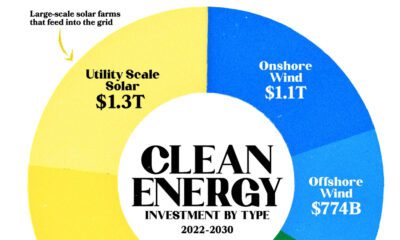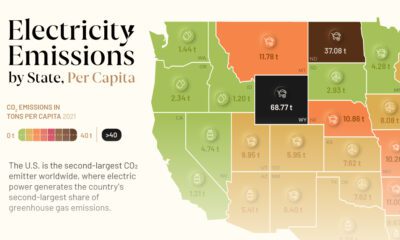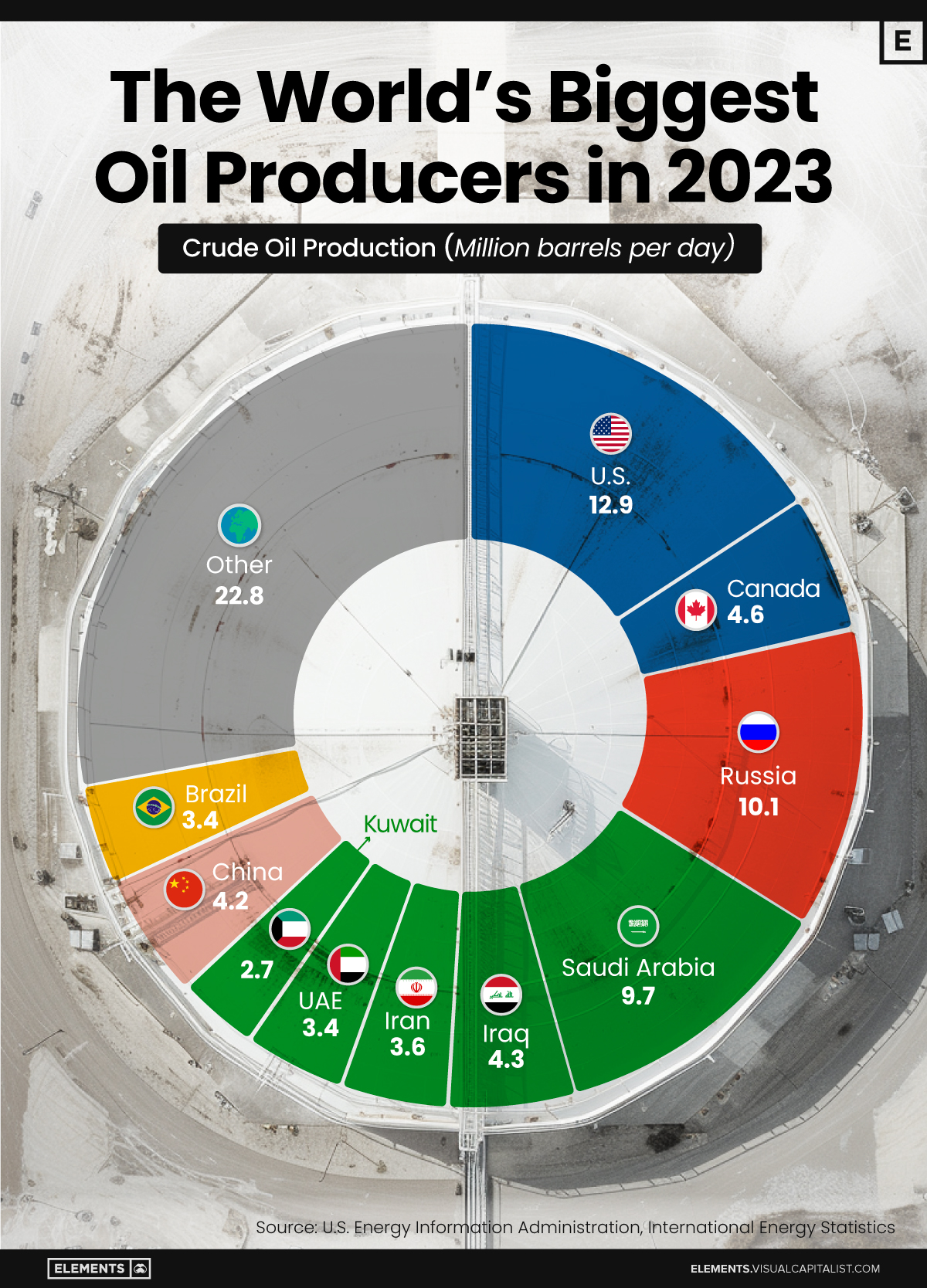Energy
This Map Shows Which States Will Benefit From Solar Eclipse Tourism
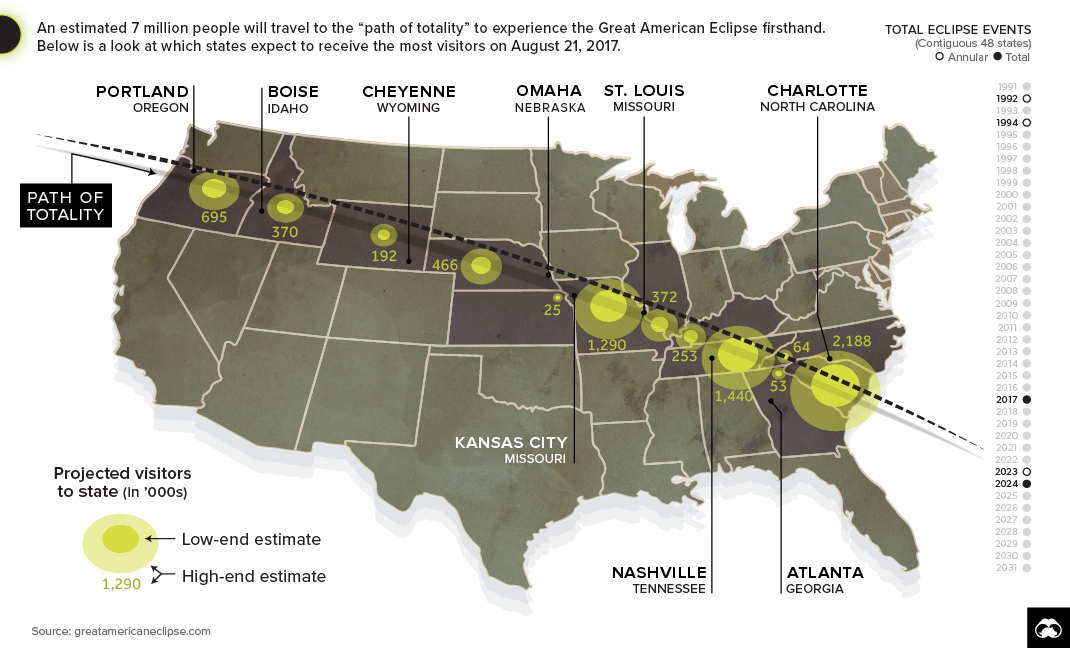
This Map Shows Which States Will Benefit From Solar Eclipse Tourism
On August 21st, millions of Americans will migrate to towns along the path of the upcoming solar eclipse. The Great American Eclipse will stretch over 12 states, and it’s already being called the greatest temporary mass migration to see a natural event in U.S. history.
The last total eclipse occurred in the United States in 1979, and businesses are cashing in on the pent-up enthusiasm for this extremely rare celestial event.
Here are some high payoffs that “eclipse boom towns” are hoping for:
| City / Town | State | Population | Projected Visitors | Est. Economic Impact |
|---|---|---|---|---|
| Madras | OR | 6,200 | 100,000+ | $9 million |
| Carbondale | IL | 26,000 | 55,000+ | $7 million |
| Nashville | TN | 684,410 | 50,000+ | $15 million |
| Hopkinsville | KY | 32,000 | 100,000+ | $30 million |
Many of the towns in the path of totality have been aggressively marketing themselves to potential onlookers. One town, Hopkinsville, KY, has branded itself as “Eclipseville” leading up to the occasion. It’s likely to payoff, since it’s been reported that visitors from 19 countries and 46 states are descending upon the small town for the perfect glimpse of the phenomenon.
As another example, the sleepy agricultural town of Madras, OR, has an entire festival devoted to the solar eclipse. Appropriately named Oregon Solarfest and running from August 17-22, the festival takes advantage of the town’s perfect location in the high desert of Central Oregon and typical clear skies. Although it’s hard to really determine how many people are coming for the solar eclipse – Madras anticipates over 100,000 visitors, and millions of dollars pouring into the town’s economy.
Astronomical Prices
Accommodation and short-term rentals are skyrocketing thanks to the eclipse craze. Hotels along the route have been 95% booked since 2013, so remaining rooms are going at a premium. Here are a couple examples:
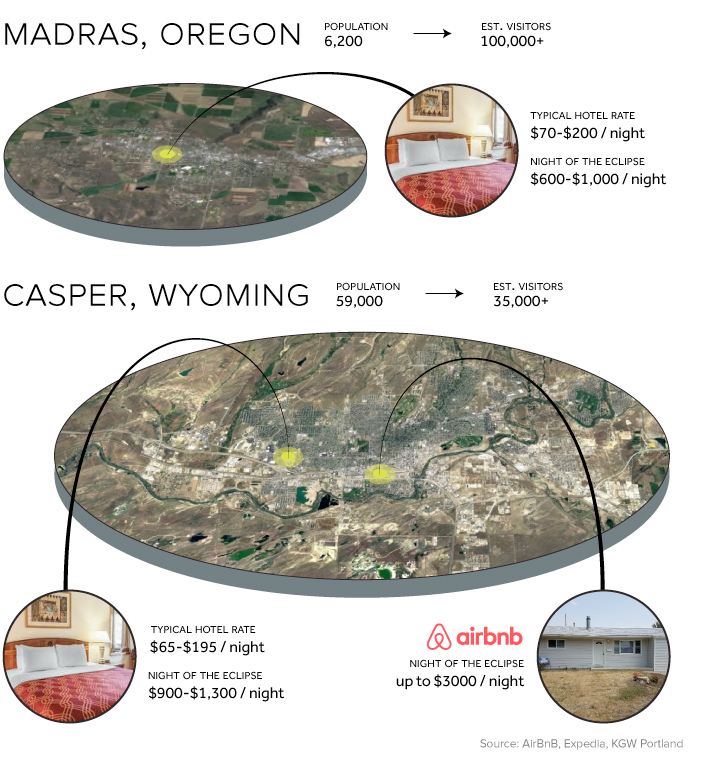
Airbnb reports that over 40,000 guests have been booked along the path of totality so far, with Nashville and towns in South Carolina making up nearly half of that activity.
Total Eclipse of the Grid
The other big impact the eclipse will have is on the U.S. power grid – particularly in states that have a higher reliance on solar energy.
Out of 1,900 power plants, only 17 of them are in the path of totality (mostly in eastern Oregon), but hundreds of others will be at least 90% obscured (mostly around North Carolina and Georgia).
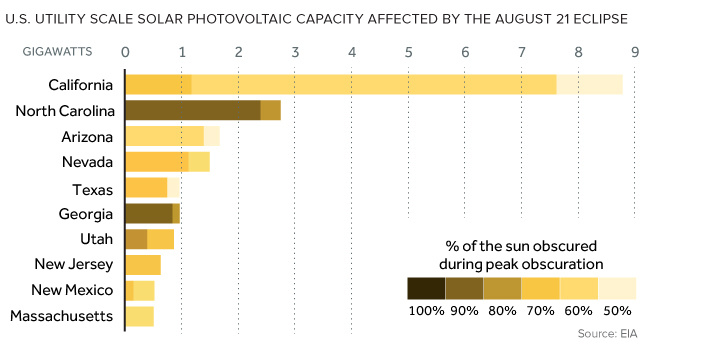
More than 100 million solar panels are expected to be affected, dropping output by 20% — equivalent to all the energy the city of San Francisco uses in a week.
At first glance, the eclipse might seem like a major headache for utilities, power generators, and grid operators. However, David Shepheard, a managing director at Accenture, sees it instead as a rare opportunity for a “forecastable dress rehearsal” for dealing with major grid interruptions. Some companies are even using the brief interruption to measure exactly how much rooftop solar power is actually connected to their grids.
Party like it’s 2024
If you aren’t able to watch the upcoming eclipse, don’t worry. The next total solar eclipse in the United States will take place in 2024. (You may want to book your room now though!)
Energy
The World’s Biggest Oil Producers in 2023
Just three countries accounted for 40% of global oil production last year.
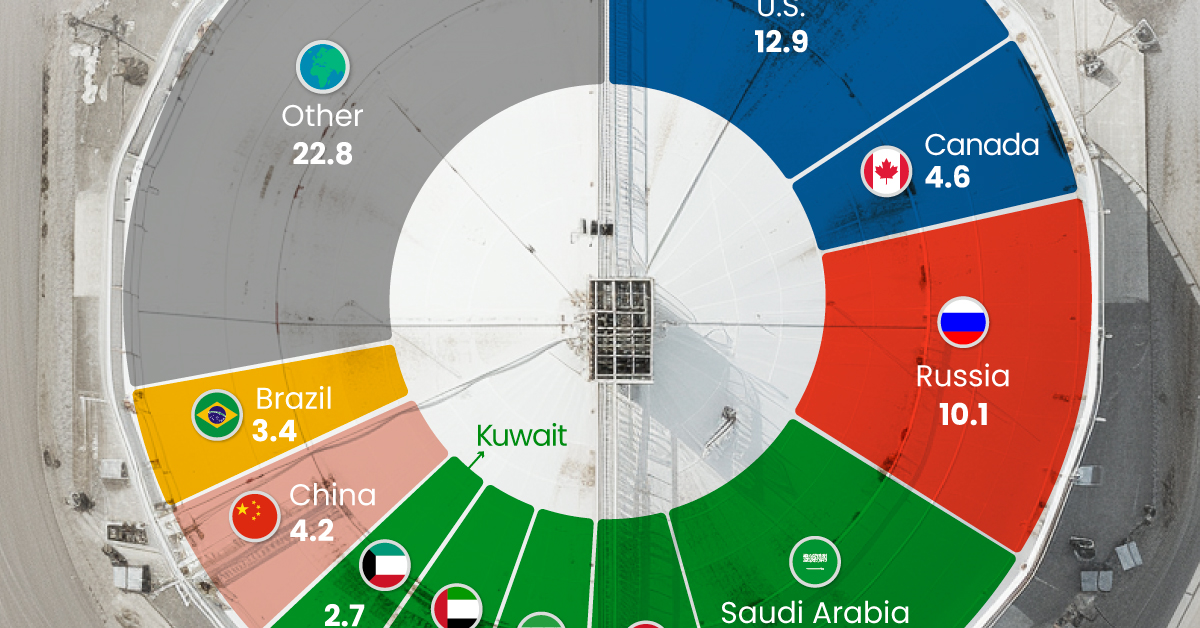
The World’s Biggest Oil Producers in 2023
This was originally posted on Elements. Sign up to the free mailing list to get beautiful visualizations on natural resource megatrends in your email.
Despite efforts to decarbonize the global economy, oil still remains one of the world’s most important resources. It’s also produced by a fairly limited group of countries, which can be a source of economic and political leverage.
This graphic illustrates global crude oil production in 2023, measured in million barrels per day, sourced from the U.S. Energy Information Administration (EIA).
Three Countries Account for 40% of Global Oil Production
In 2023, the United States, Russia, and Saudi Arabia collectively contributed 32.7 million barrels per day to global oil production.
| Oil Production 2023 | Million barrels per day |
|---|---|
| 🇺🇸 U.S. | 12.9 |
| 🇷🇺 Russia | 10.1 |
| 🇸🇦 Saudi Arabia | 9.7 |
| 🇨🇦 Canada | 4.6 |
| 🇮🇶 Iraq | 4.3 |
| 🇨🇳 China | 4.2 |
| 🇮🇷 Iran | 3.6 |
| 🇧🇷 Brazil | 3.4 |
| 🇦🇪 UAE | 3.4 |
| 🇰🇼 Kuwait | 2.7 |
| 🌍 Other | 22.8 |
These three nations have consistently dominated oil production since 1971. The leading position, however, has alternated among them over the past five decades.
In contrast, the combined production of the next three largest producers—Canada, Iraq, and China—reached 13.1 million barrels per day in 2023, just surpassing the production of the United States alone.
In the near term, no country is likely to surpass the record production achieved by the U.S. in 2023, as no other producer has ever reached a daily capacity of 13.0 million barrels. Recently, Saudi Arabia’s state-owned Saudi Aramco scrapped plans to increase production capacity to 13.0 million barrels per day by 2027.
In 2024, analysts forecast that the U.S. will maintain its position as the top oil producer. In fact, according to Macquarie Group, U.S. oil production is expected to achieve a record pace of about 14 million barrels per day by the end of the year.
-

 Money2 weeks ago
Money2 weeks agoVisualizing the Growth of $100, by Asset Class (1970-2023)
-

 Money1 week ago
Money1 week agoWhere Does One U.S. Tax Dollar Go?
-

 Green2 weeks ago
Green2 weeks agoRanked: Top Countries by Total Forest Loss Since 2001
-

 Real Estate2 weeks ago
Real Estate2 weeks agoVisualizing America’s Shortage of Affordable Homes
-

 Maps2 weeks ago
Maps2 weeks agoMapped: Average Wages Across Europe
-

 Mining2 weeks ago
Mining2 weeks agoCharted: The Value Gap Between the Gold Price and Gold Miners
-

 Demographics2 weeks ago
Demographics2 weeks agoVisualizing the Size of the Global Senior Population
-

 Automotive2 weeks ago
Automotive2 weeks agoTesla Is Once Again the World’s Best-Selling EV Company









